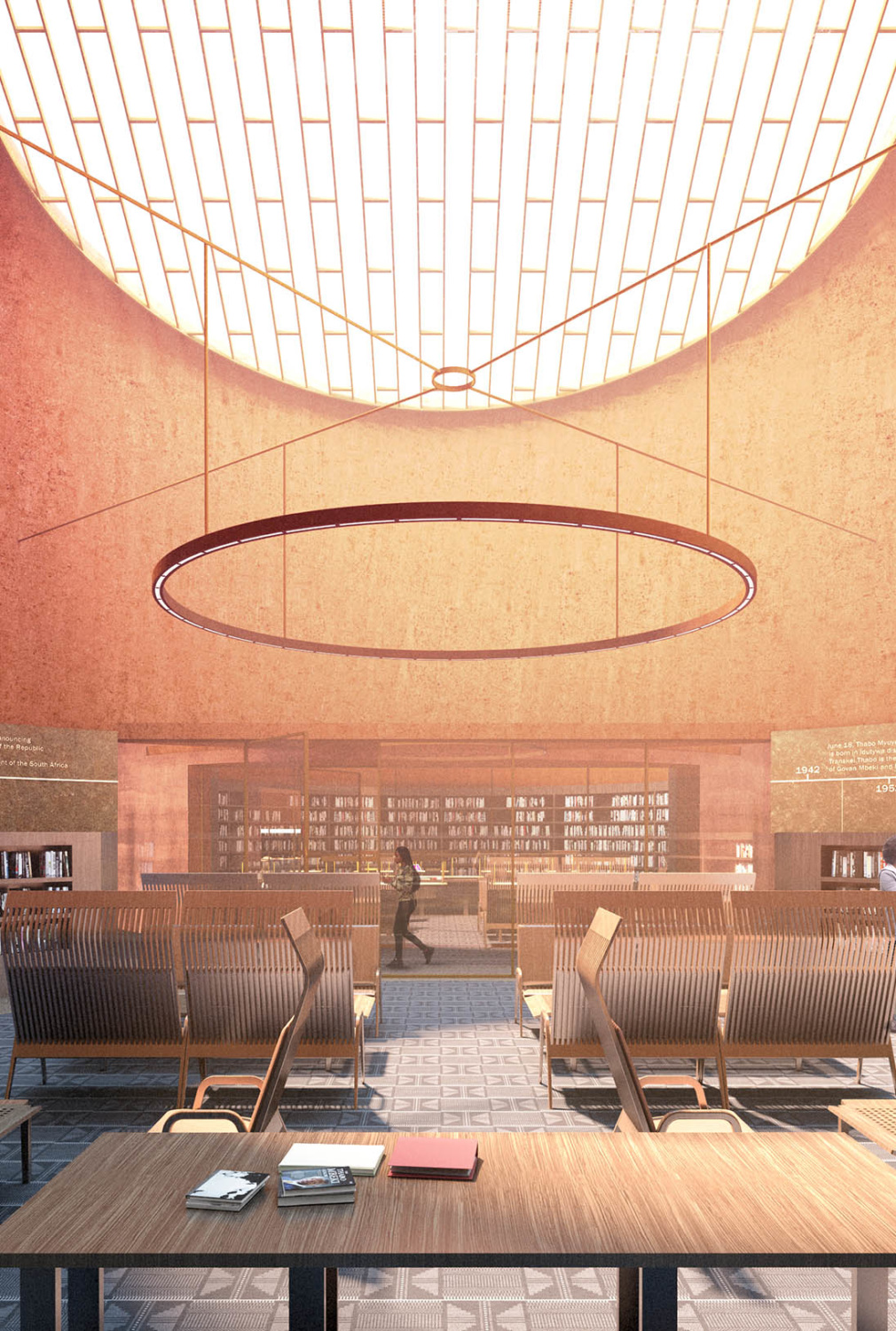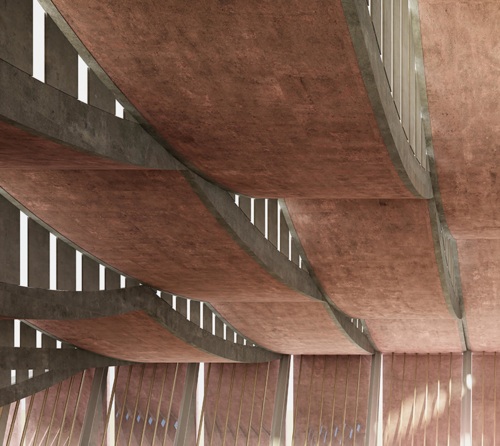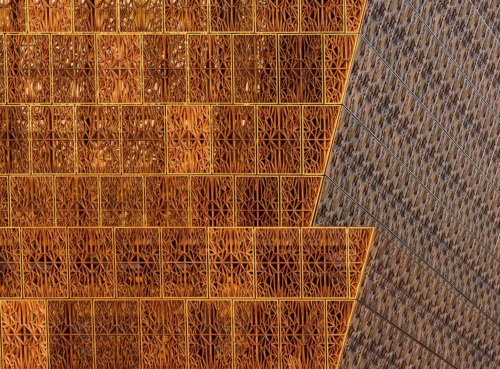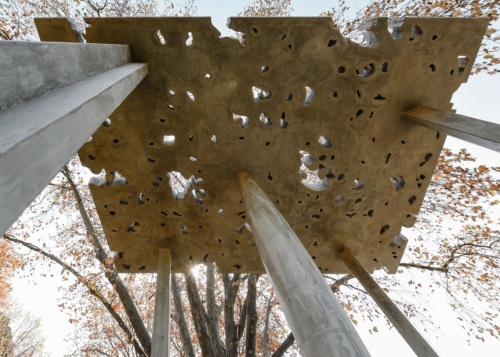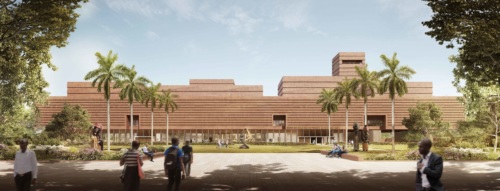
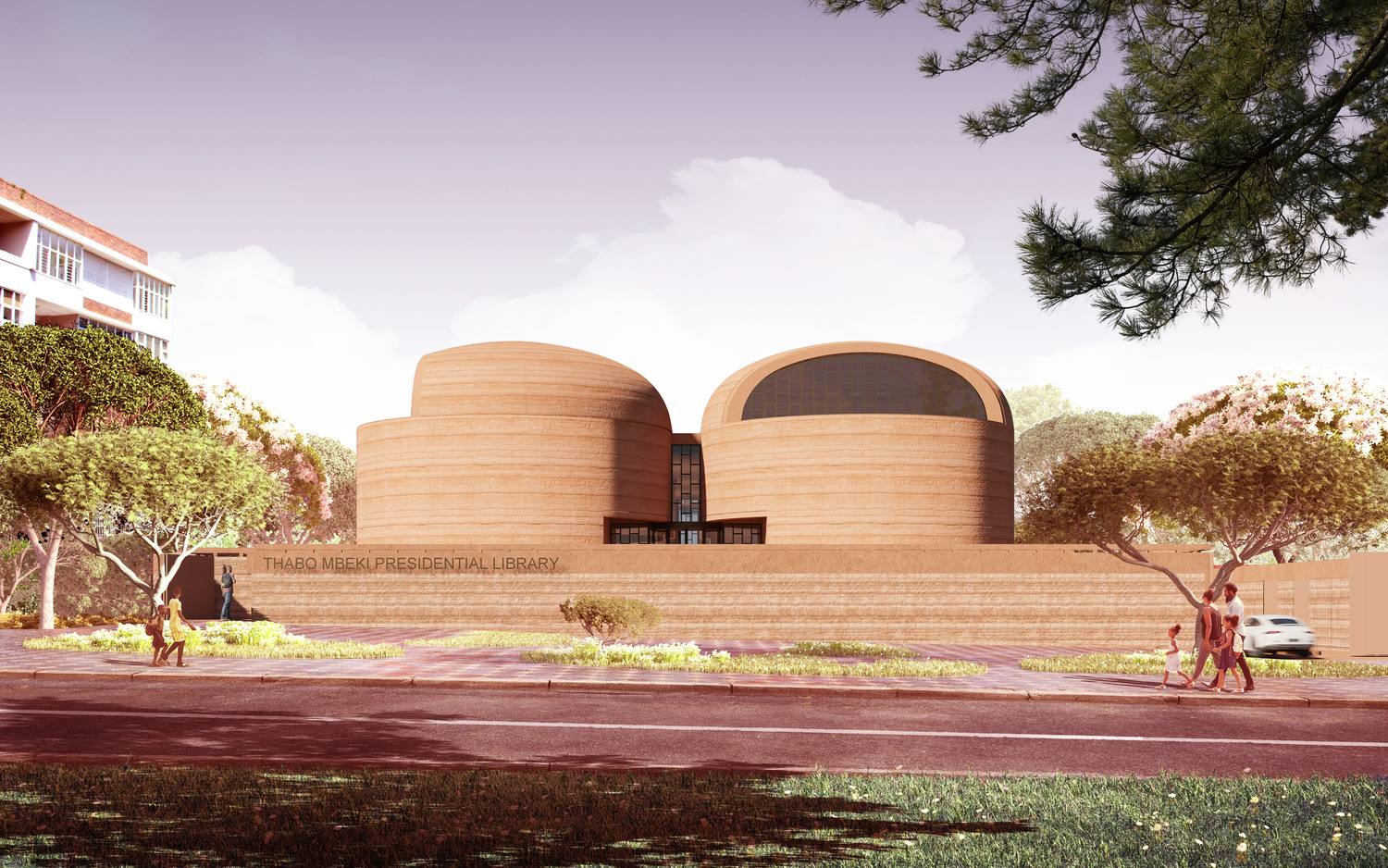
Thabo Mbeki Presidential Centre
Johannesburg, South Africa
- Status
Current - Area
5,400 m² / 58,125 ft² - Category
Civic, Culture, Education - Client
Thabo Mbeki Foundation - Design Architect
Adjaye Associates - Architect of Record
MMA Design Studio - Awards
Best Library, Chicago Athenaeum International Architecture Award, 2021
Technical Info +
The architecture of the Centre taps into the collective memory of the continent through the establishment of a new historical centre for African consciousness in which knowledge, education and sustenance are nurtured in the representation and intelligence of the continent. - David Adjaye
Located in Johannesburg, the Thabo Mbeki Presidential Centre is a space of excellence, learning, research, discourse and cultural exchange predicated on the African perspective. The new Centre will feature a multiplicity of functions including a museum, temporary exhibition space, research center and special collections, auditorium, women’s empowerment center, reading room, shop, cafeteria, digital experience space, seminar rooms, office space and an archive center. The archive center will act as a repository for the papers, artifacts and key documents of President Mbeki and other significant African historical figures. Providing infrastructure for the preservation and distribution of African history and knowledge, the Centre will become a new anchorpoint and campus for local and international scholars.
Conceptually, the new building makes visible the invisible knowledge of ancient and contemporary African history through both form and program. Sited in Riviera, Johannesburg, the Centre will harbour the knowledge of the land whilst acting as a space for connection in which the advancement of an African Renaissance becomes the premise of the structure. Represented in design as a metaphor for knowledge-based nourishment, the new building references the structures of granaries — which allow for the extension of grain production and the systematization of cycles of feeding, planting and harvesting.
Using architecture as a tool to reimagine storage and sustenance into form, the granary stores guide the overall building concept. The eight cylindrical granary-styled forms are made contemporary through the topping of domes with apertures that take into consideration the solar orientation of light within the site to create a distinct atmosphere for each of the programs within. The internal infrastructure of these chambers see to it that the building accommodates a multiplicity of programmatic functions. They are connected through an ‘indoor den’ — a horizontal interstitial space that extends the length of the entire building to provide a new public space in service to the community.
